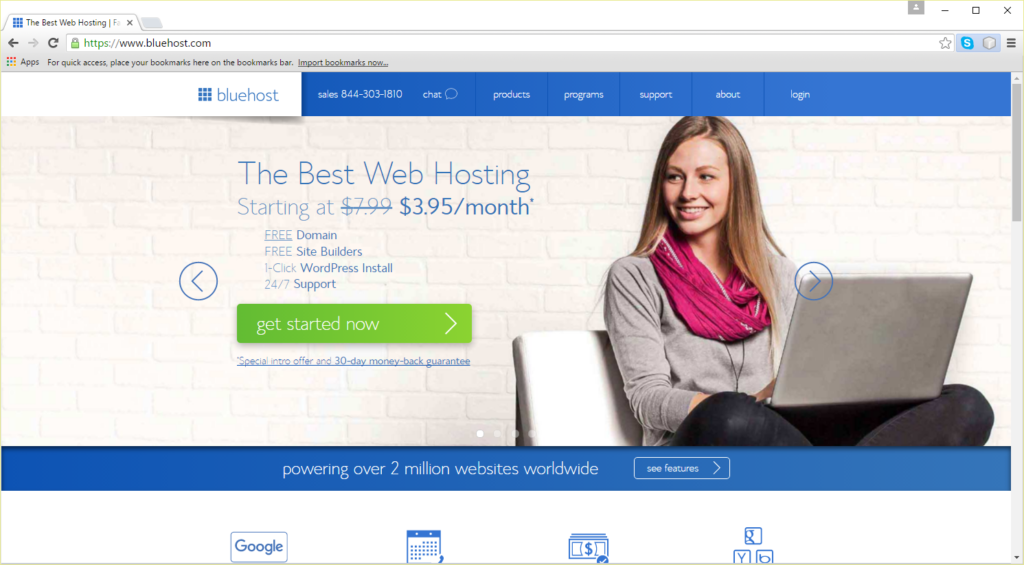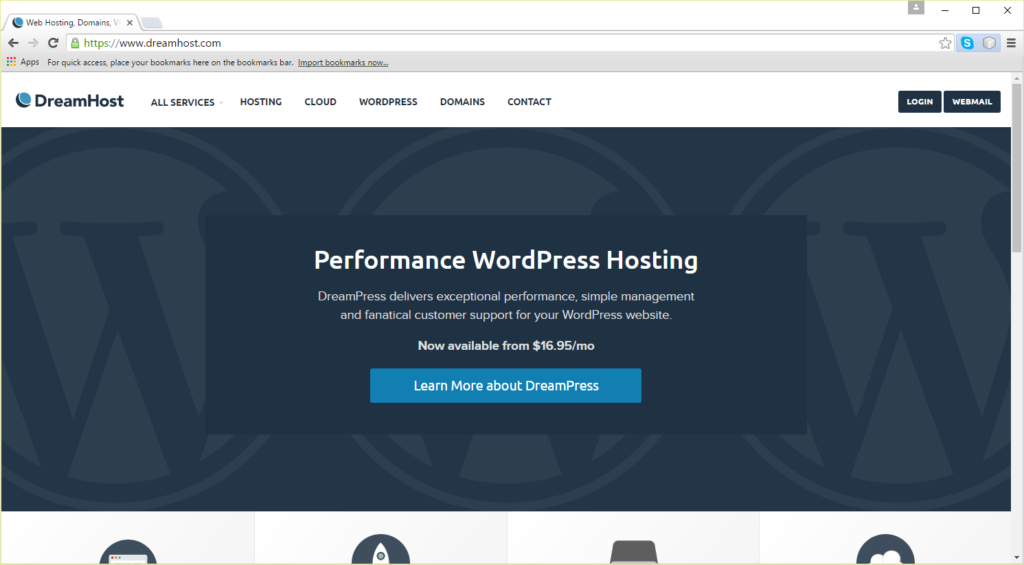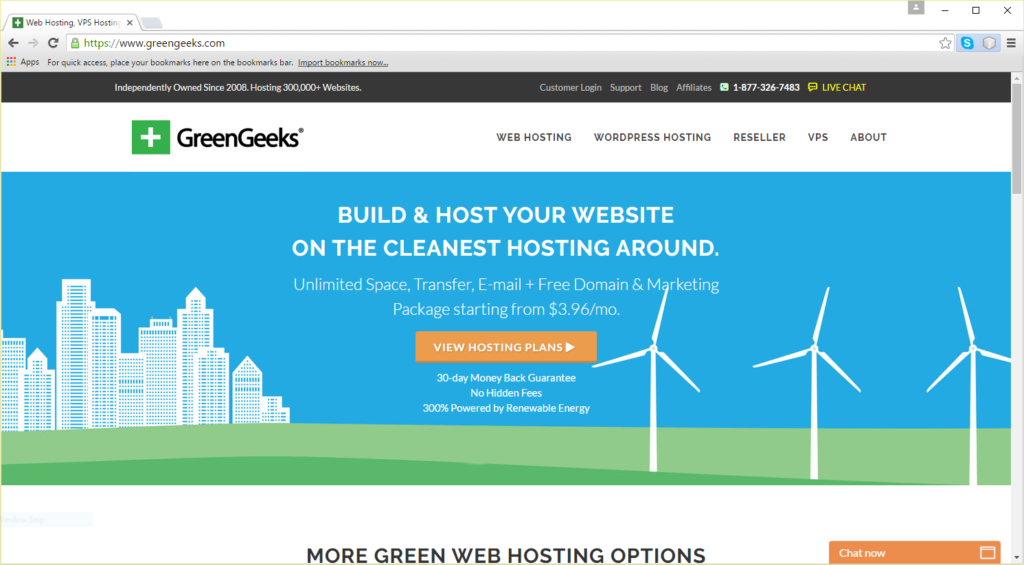If you’re new here, be sure to checkout parts one, two, and three.
In this final part of this post series, we will be discussing hosting companies in relation to website in general, though the material will definitely apply to WordPress sites.
Now this is where you’ll start to have a bit of a monetary outlay for your WordPress site adventures as there is a monthly, or yearly if you so choose, fee to having one of these companies “host” your site for you. If you’ll recall in the discussion of a site setup at WordPress.com, you we’re first asked about putting out money to have your site tied to a dedicated host name. That was, opposed to say…
yourblogsitename.wordpress.com
you could direct people to something more along the lines of…
yourblogsitename.com
From a brand building perspective, in my opinion, the latter address would be preferable as it gives people a sense that your site, and operation at large, has its proverbial sh*t all the more together. In the case of WordPress.com, as of this writing, they ask for a paltry $18/yr to provide this option to you, but you still get to largely sit a site on their servers at no extra cost, under certain conditions.
While their stated conditions are very fair and reasonable, having a site with a hosting company would give you even more freedom and leeway with how the technical specifics of your site is handled and what you can post on your site.
To get started on this last leg of this journey, we need to have a discussion about the two terms you’re likely to run into, right away, while vetting any hosting company: “Shared Hosting” and “Dedicated Hosting”.
Where do you want to ‘live’ (and can you afford it)?
The simplest way to understand the difference between these two is to start by thinking of your website, or future website, as a version of ‘you’ that needs to have a place to live on the internet.
In the case of Shared hosting, your site will be placed on a server with a bunch of other sites that the hosting company will ensure is making equal use of the server’s resources. The real-world equivalent of this would be a Hostel where you would have a bed or bunk in a large communal room with several other people. On average, this is the cheapest option to go for as most hosting companies won’t ask for more than $10-15 USD a month to provide this to you. In most cases, your service even comes with a domain registration for at least one address so that when you’re shopping your page around you can use ‘thisismysite.com’, and not make it look as if you’re bumming space off of someone else’s server and good favor.
For the record, I’m not saying that’s an outright bad thing. Everyone has to start somewhere in all things and if that’s where you have to start, by all means, do so and make no apologies for it. Still, you always want to have a forward-thinking mindset of what your putting out to the public space and how it could be interpreted.
The downsides to shared hosting is that, depending on exactly how the hosting company chooses to situate various websites in relationship to one another on their server, if something malicious befalls one other site that is ‘near’ you, there is a chance that your site could be affected. Also, if for some reason your website registers a rapid pickup in traffic, say a post you make goes viral or you just mange to hustle your way to a sizeable regular following, the hosting company will pick up on this and either cut traffic to your site altogether (sometimes without even notifying you) or they will begin to push you in the direction of their dedicated hosting offerings.
While that, in particular could be seen as a ‘Good’ problem to have, from a financial standpoint, it may not be a jump that you are ready to make at the time that it happens. If you get a chance to talk directly to someone at any particular company, you’d be well advise to inquire about exactly how they handle situations where shared accounts seem to outgrow their shared space.
Moving on to Dedicated hosting, and continuing to follow the current analogy, this is the instance in which your website is allotted it own dedicated server, all to itself. The real-world example of this would be you having your own apartment in a complex. Technically, your space may be physically in proximity to others, but you are all the more insulated from what may happen to other people’s spaces. One of the major perks to this setup is, apart from a dedicated hostname, your site will be issues a specific IP address. One of the reasons you would need that would be to connect your site to other services that will only allow you to identify your site by use of an IP. This is a matter that eCommerce site primarily get into.
The one major downside to dedicated hosting is the cost: The amount you would pay, at most hosting companies in a year for shared hosting, which is an odd $100USD, is what you’d be paying monthly for that same company to give you one of their server all to yourself. Granted, for what you would be provided in extra service, above shared hosting, its worth the outlay if you can make it. However, unlell you’re planning to setup some kind of eCommerce site, or have a very specific plan or reason in mind for needing dedicated hosting, you’ll likely be just fine with a shared hosting package, at least for starters.
Going Under The Hood
Apart from your choice of hosting space, another thing you will need to know up front, is how you will be able to work on your space, at least in the background. There are various different offering that the hosting companies make to people in this regard, but the most commonly know one is called the ‘cPanel’:
This tends to be the easiest one to use for people starting off with these matters. The good thing about this is that is doesn’t change much between hosting companies. There may be different icons, fonts, colors and the like used to display things to you, but once you’ve seen two or three of them, you’ve pretty much seen them all. When reviewing hosting companies, you’ll want to check to make sure that whatever hosting package you buy into comes with at least that. There’s one company, that we’ll talk about shortly, that doesn’t seem to provide cPanel support in their backend, though it hardly takes away from their overall service and customer support.
One last up-front matter you’ll want to know about from a potential hosting company is how, or even IF, they make backups of your website as part of your package. While just about all hosting companies can do this for you, some treat it as a separate service offering, past the base hosting. Considering the extra time, equipment, and manpower that is needed on their end to do this properly, I say that those who expect to be paid a little more for helping out with this aren’t asking for much, insofar as wanting to be paid separately for it. However, if you don’t like their quote there are WordPress plugins that will allow you to tend to this matter yourself. If anything, even if a hosting company is prepared to help you out with this, and do it for free, Id advice you to research having a plan of your own in place just so you won’t be completely at someone else’s mercy if a crisis strikes.
In this respect, there are two questions you will want to ask a sales rep, if you cant find the information on the website:
- Do you provide backup services for account sites?
- If so, is the service included in the hosting package or is it separate
- What is the retention period for backups?
- In other words: How many backups are made and how long are they kept?
- If you find, one day, that your site has been running malicious code, a backup from a week ago won’t do you much good if the retention period is “One Week” and your site was infected prior to that
Meet (Some Of) The “Players”
With all of that being said, here is a list of three hosting companies that I am intimately familiar with, and can speak to regarding their offerings. Before I begin, I want to make it clear that I am not outright advocating, or chastising, any particular one:
BlueHost (www.bluehost.com)
This is the hosting company suggested, specifically, by the people at WordPress. If you want a live site, and you don’t want to do it through them, then these are people they will direct you to, and for good reason. Their prices are competitive, its very easy to find your way around their site, the site itself addresses all of the matters above in very plain English, and they will even allow you to test drive their cPanel system so you can see what you will be getting into before you fork over your credit/debit card information.
Thus far, Ive heard nothing but good things from people who have worked with this company.
DreamHost (www.dreamhost.com)
This is the company I specifically use for my own personal and professional sites. I’ve been with them for a few years now and I’m very pleased with the service and support that I’ve received from them. That said, I wouldn’t be too quick to refer you, or someone else who is a bit new to these matters, to DreamHost only because their admin panel is not cPanel based. Its not at all complex, but if does take a bit of getting used to as some of the functionalities that you might otherwise just fine on a main cPanel page are a bit buried in some sections.
GreenGeeks (www.greengeeks.com)
One of my clients specifically told me that this was the company that they wanted their site to reside on. Their claim to fame is that their offices and server farms are running on 100% clean and renewable energy, hence the ‘Green’ in their “GreenGeeks” name. This isn’t something that any of my client’s site visitors are likely to notice, unless we somehow specifically tell them, but there is a movement of people who are striving to just be quietly “Green” and live and work as much as then can through environmentally friendly practices and there is certainly nothing wrong with that.
“So I have a hosting company now. Now what?”
Regardless of whether you choose to go with one of the above, or someone else, once you have your account setup and built, where you go from there will depend on your answer to one simple question:
“Do you already have a WordPress site setup somewhere? If not, how quickly do you want one setup?”
If you already have a site somewhere, especially if its sitting on your computer, then you will likely transferring it into your new hosting space by way of a FTP connection. This is something that the support tech at your host of choice will, or at least should, have no problem assisting you with, if not outright doing it for you.
If you don’t have a site setup already, your best bet for getting one going for yourself will be to look for the section of your cPanel that allows for app installs and install WordPress through that. It will setup the new database for you and download the latest build into your hosting space in just the right spot. From there, you will just need to surf to your site’s address and go through their “Famous Five Minute Setup”.
The TL;DR: Thanks!
With that, I will close this last part of my inaugural post series on “WordPress 101”. If you’ve actually followed along from the beginning, or even if you just started from this post here, thanks for reading. I hope I was able to demystify this matter a bit and give you some insight on how you can get started on making it your own.






